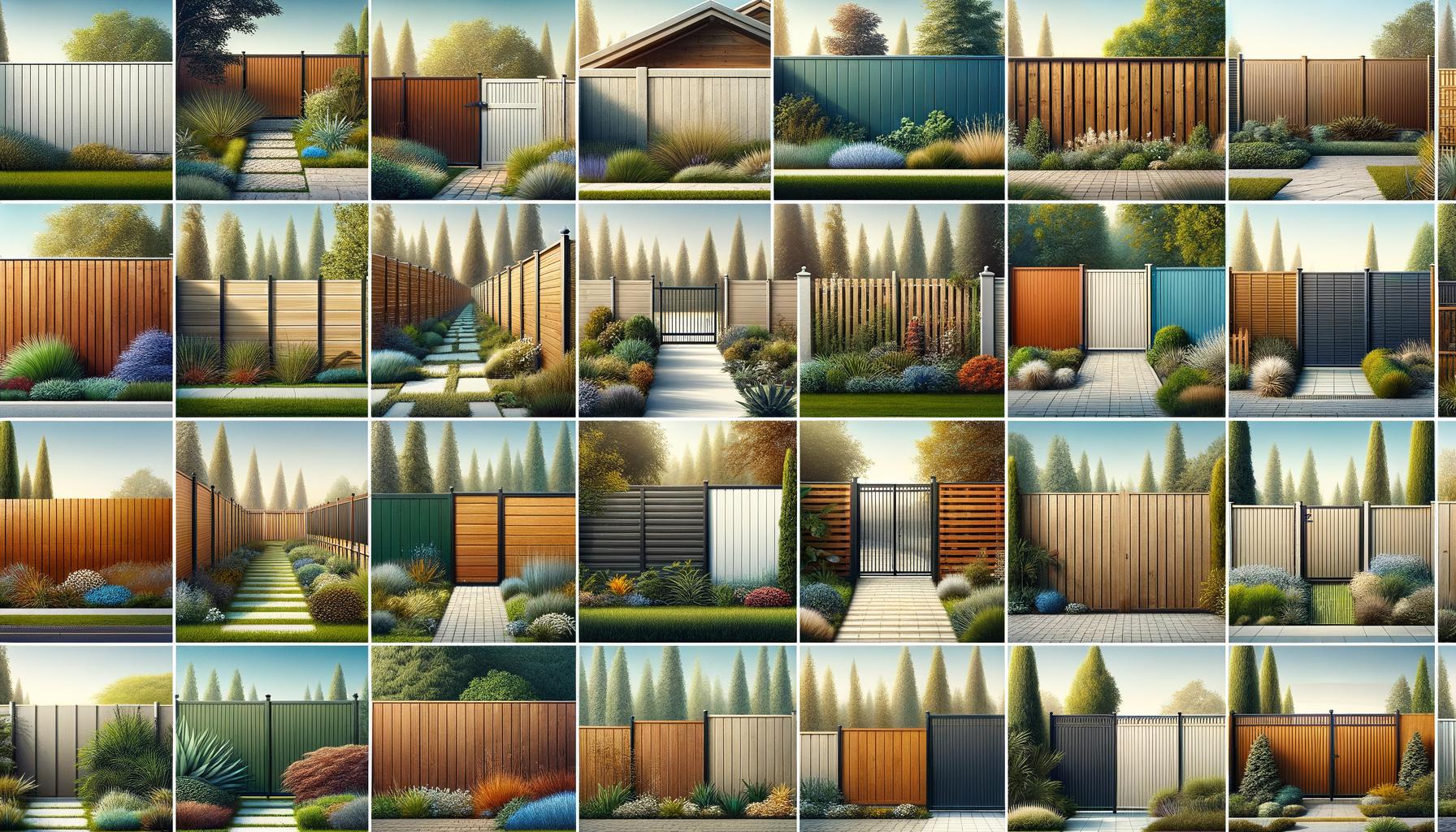Exploring the World of Fence Panels for Your Outdoor Space
Fence panels are a versatile solution for enhancing the security and aesthetic appeal of your property.

Understanding the Different Types of Fence Panels
Fence panels serve a variety of purposes, ranging from privacy and security to enhancing the aesthetic appeal of a property. When considering fence panels, it’s essential to understand the different types available to choose the one that best fits your needs. Primarily, there are wooden, vinyl, metal, and composite panels. Each comes with its own set of advantages and unique characteristics.
Wooden fence panels are among the most popular choices because of their natural beauty and versatility. They are available in a wide range of styles, from classic picket fences to solid panels that offer complete privacy. Vinyl panels, on the other hand, are known for their durability and low maintenance requirements. They resist weathering and pests, making them a long-lasting choice for many homeowners.
Metal fence panels, such as aluminum or wrought iron, offer a sturdy option that balances security and aesthetics. While they might be more expensive initially, their longevity and minimal maintenance often offset the higher upfront cost. Composite panels are made from a blend of wood fibers and plastic, providing the natural look of wood with greater durability and resistance to the elements.
Factors to Consider When Choosing Fence Panels
When selecting fence panels, there are several critical factors to consider to ensure you make an informed decision. The first is the purpose of the fence. Are you looking to increase privacy, improve security, or enhance the landscape design? Your primary goal will significantly influence your choice of material and style.
Cost is another vital consideration. While wooden panels might be more affordable initially, options like vinyl or composite, which require less maintenance and have a longer life span, may offer better value in the long run. Additionally, it’s essential to think about maintenance. Wooden fences will need regular staining or painting, while vinyl and metal require much less upkeep.
The climate in your area also plays a crucial role in your decision. High humidity and extreme weather conditions can affect the durability of certain materials. For instance, wood might rot or warp in very humid climates, while vinyl can become brittle in extreme cold.
Installation and Maintenance of Fence Panels
Installing fence panels can be a manageable DIY project for those who are handy, but it might be wise to hire professionals if the task feels daunting. The installation process generally involves setting posts in concrete, attaching the panels securely, and ensuring that everything is level and aligned.
Once installed, regular maintenance is key to extending the lifespan of your fence panels. Wooden fences should be inspected for rot and repainted or restained as needed. Vinyl and metal fences benefit from a simple clean with water and mild detergent to keep them looking their best.
Composite panels are among the easiest to maintain, usually only requiring periodic cleaning. It’s also a good idea to check all fence types for loose screws or bolts periodically to ensure they remain secure and functional.
Improving Curb Appeal with Fence Panels
Fence panels are not only functional; they can also significantly enhance the curb appeal of a property. With various styles, colors, and materials available, homeowners can choose a design that complements and enhances the overall look of their home.
Consider painting or staining wood fences to match the trim colors of your house. This cohesive look can make your property stand out. For a more modern aesthetic, metal panels or horizontal slat designs can provide a sleek and contemporary appearance.
Adding decorative elements, like trellises or post caps, can further customize and elevate the design of your fence. Plants and flowers can be integrated into the fencing design for added color and beauty, blending nature with your man-made structure.
Environmental Considerations and Sustainability
As environmental concerns become increasingly important to homeowners, considering the sustainability of your fence panels is vital. Wooden fences from sustainably sourced timber provide an eco-friendly option. Look for certifications from organizations that assess the sustainability of wood sources.
Vinyl fences, while not biodegradable, can be made from recycled materials and are recyclable themselves at the end of their lifespan. Composite fences often consist of recycled plastic and wood fibers, offering a blend of sustainability and resilience.
When choosing fence panels, consider not just the immediate impact on your home, but also the long-term environmental implications. Opting for sustainable materials can contribute positively to the environment while still meeting your fencing needs.
Conclusion
Fence panels offer not just a practical solution for privacy and security but also a way to enhance the aesthetic value of your property. With various materials and styles available, you can tailor your choice to fit your specific requirements, budget, and environmental considerations. By understanding the options and factors involved, you can make a well-informed decision that will serve your home for years to come.